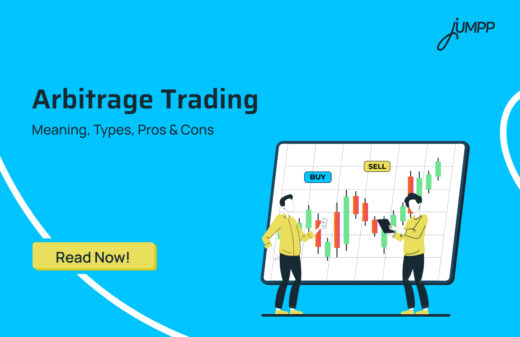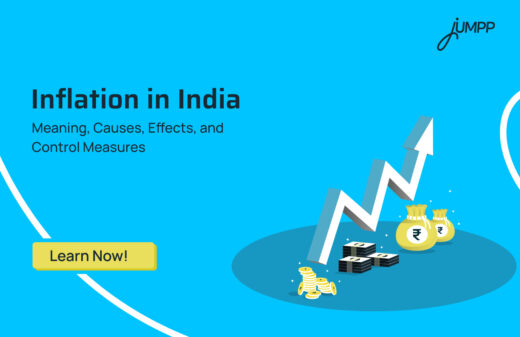What is Stop Loss in the Share Market? Benefits and Limitations

Markets don’t warn you before crashing. One minute you’re in profit, the next, red all over. How do you protect your trades? You need a system to protect yourself from unexpected drops. That system is called a stop loss in stock market. Now, what is a stop loss order, and how does it work?
Let’s learn the stop loss meaning and how stop loss in trading functions!
What is Stop Loss in Stock Market?
In the stock market, emotions often cloud judgment. You might hold on, hoping prices will bounce back. But that hope can cost you. A stop-loss order removes emotion from the equation. It executes the sell automatically when your chosen price level is hit.
Stop-loss is a simple tool that helps you protect your money in the stock market.
Let’s say you buy a stock at ₹500. But what if the price starts falling? You don’t want to keep holding it and lose more money. This is where a stop-loss order helps. You can sell the stock if it falls to ₹470. The moment the price hits ₹470, the system will sell it automatically.
This helps you avoid bigger losses.
In short, a stop-loss is an instruction to exit a trade if the price goes below a level you are not comfortable with. It is especially useful when markets are volatile or when you cannot watch the market all the time.
Using a stop-loss keeps you disciplined. It removes emotions like fear and hope from your trading decisions. Even professional traders use it to protect their capital.
So if you are just starting out, make stop-loss your habit. It can save you from any sudden market crashes!
How Does a Stop-Loss Order Work?
A stop-loss order helps you exit automatically when the price starts falling and things are not going your way.
- You decide how much loss you’re okay with.
If you don’t want to lose more than ₹30, you can place a stop loss of ₹550 in case you bought the stock at ₹580 - You enter the stop-loss order with your trading platform.
You don’t need to do anything after that. The system keeps tracking the stock price for you.
Open a free demat account now and start trading in stocks, bonds, mutual funds, and more!
- If the stock falls to ₹550, your order gets triggered.
At that point, the system automatically places a sell order.
Now, what is a trigger price in stop loss?
The price at which a stop-loss gets activated is called the trigger price
If you used SL-M (stop-loss market order), it sells immediately at the best price available.
If you used SL (stop-loss limit order), it will only sell at the price you’ve set or better.
- You exit the trade, and your loss is limited.
Types of Stop Loss Orders
There are mainly two types of stop-loss orders used in the Indian stock market:
1. Stop-Loss Limit Order (SL)
In this type, you need to enter two prices:
- A trigger price (the level at which the order gets activated)
- A limit price (the maximum or minimum price at which you’re willing to sell or buy)
Once the stock hits the trigger price, your order becomes active and will be placed as a limit order. That means it will only be executed if the stock is available at your specified limit price or better.
This gives you more control, but it also carries a risk. If the stock price falls too fast and crosses your limit price, your order might not get executed.
2. Stop-Loss Market Order (SL-M)
Here, you only enter the trigger price.
As soon as the stock hits that trigger price, your order becomes a market order. It will be executed immediately at the best available price in the market.
This ensures the order is executed, but the final price may be slightly different from your trigger price, especially if the stock is volatile.
Is Stop Loss Worth It?
Yes, SL orders are worth it, especially if you want to avoid constant market monitoring or limit sudden losses. They act like an automatic safety switch for your trades. Once your stock hits the trigger price, the system places a sell order without you needing to do anything.
Let’s explore the key benefits of using SL in trading!
Advantages of Stop-Loss Orders
You don’t need to watch the market all day. A stop loss in share market helps in protecting your trades!
1. It limits your losses
This is the primary benefit. A stop-loss order automatically exits your position when the stock falls below a set level. It helps protect your capital if the trade goes against you.
For example, if you bought a stock at ₹800 and placed a stop-loss at ₹770, you limit your maximum loss to ₹30 per share.
2. There is no need to monitor constantly
You don’t need to keep watching the screen all day. If the stock hits your stop-loss, the system executes the order automatically. This is useful for people with full-time jobs or less screen time.
3. It reduces emotional decision-making
Without a stop-loss, traders often hold on to losing positions, hoping they’ll bounce back. This delay can increase losses. Stop-loss brings discipline and removes emotions from the decision.
4. It works even in volatile markets
In fast-moving markets, prices can change quickly. A stop-loss helps you exit before the losses deepen, especially during sudden market crashes.
5. A stop loss helps define risk
Traders often decide how much loss they’re willing to accept before entering a trade. Stop-loss lets you define that risk in advance. It supports better risk-reward planning.
Disadvantages of Stop-Loss Orders
In volatile markets, your stop-loss may not sell at your set price. The loss might be bigger than expected.
1. There is a risk of premature triggering
Sometimes, prices dip temporarily and then bounce back. In such cases, your stop-loss might get triggered unnecessarily, and you’ll miss the upward move.
This is called getting “stopped out” too early.
2. There is no guarantee on exit price (in SL-M Orders)
In stop-loss market orders, once the trigger is hit, the order gets executed at the best available price. If the stock is illiquid or the market is volatile, the actual exit price may be far lower than expected.
3. It requires proper placement
If you place your stop-loss too close to the buying price, it can get hit too often. If you place it too far, your losses can be large. It needs careful planning based on stock volatility and your risk appetite.
4. It doesn’t protect against gaps
In cases of bad news or overnight events, a stock can open much lower than your stop-loss. In such situations, the stop-loss won’t trigger at your set level but at the next available price. This is called gap-down risk.
5. It is not ideal for long-term investors
Long-term investors don’t usually use stop-losses, especially in fundamentally strong stocks. Small dips are part of market cycles. A stop-loss might make them exit too early, even when the stock is likely to recover over time.
Stop Loss vs Market Order- Know the Difference and Use Them Wisely
A stop-loss order helps you exit automatically when your stock hits a certain price. A market order, on the other hand, executes your trade at the best available price, instantly. You can use stop-loss to limit losses and market orders for quick buying or selling.
Stop Loss vs Limit Order- Which One Helps You Exit on Your Terms?
A stop-loss sells your stock when the price falls to a trigger point, to avoid heavy losses.
A limit order, on the flip side, sets a fixed price at which you want to buy or sell. So basically, a stop-loss protects your capital, while a limit order helps you trade at your chosen rate.
Market Order vs Limit Order vs Stop Loss- Learn the Difference
When you trade, you’ll usually come across three types of orders.
1. Market Order
You want to buy or sell immediately. The system picks the best available price and executes your trade.
There’s no waiting. But you don’t control the exact price.
2. Limit Order
You choose the price.
Let’s say you want to buy a stock only if it drops to ₹200. You place a limit order at ₹200.
The trade will only go through if that price becomes available. You’re in control, but there’s no guarantee the order will be filled.
3. Stop-Loss Order
This isn’t about entering the market. It’s about exiting if things go wrong.
You set a trigger price that acts as your safety net. Once the stock hits that point, your exit order is placed automatically.
Market Order vs Limit Order vs Stop-Loss Order

Conclusion
Markets can turn anytime, and they usually don’t warn you. That’s why having a stop-loss isn’t optional. It’s necessary.
It takes just one trigger to save your capital. No one can control the market. But you can control your losses. So, set your stop-loss smartly, trade with a plan and protect your hard-earned money every single time.
If you’re just starting out, understanding how to invest in share market can help you better apply stop-loss strategies and manage your risk effectively.
Stop Loss in Trading- FAQs
Yes, you can cancel or modify a stop-loss order if it has not been triggered yet. But once the stop-loss is triggered, the order is sent to the exchange and cannot be changed.
A stop-loss is a pre-set price at which your stock will be sold to limit loss. For example, if you buy a stock at ₹590 and set a stop-loss at ₹570, it will auto-sell if the price drops to ₹570.
The 7% rule means you should exit a stock if it falls more than 7% from your buying price. It helps protect your capital and prevents holding on to losing trades for too long.
No, stop-loss is used in both intraday and delivery trading. It helps in managing risk, whether you hold a position for minutes or months.
Stop-loss is a standard trading tool offered by stock exchanges and brokers. It follows all SEBI rules and works within the legal framework of the stock market.
A stop-loss isn’t risky by nature. However, if you place it too close or too far without a plan, it may do more harm than good.






